
14 minute read
Peasant Talk
from Lift Hands Volume 20 December 2021 - The Multi-Award Winning Martial Arts Magazine
by Nasser Butt
In order to understand the skill of rolling and sealing and the role it plays in the combative elements of Yang style Taijiquan, we must first clarify and familiarise ourselves with a few terms — especially rolling, since it is a term used to describe many concepts. Rolling1
This is when a large circle changes to a small circle. We use the spiral from the large circle to the small. An example of rolling is single whip, which can be used to devastating effect in any direction, and where each part — the fingers, knuckles and wrist — articulates turning downward like a wheel. It also develops the skill of understanding how to allow impactive forces to move around the joints instead of through them, thereby avoiding injury — especially to the wrist or hand.
Releasing Energy2
This is the converse of rolling where the small circle changes to the large circle and we use the outward spiral of the change.
Reeling/Drawing of Silk — Ch'an Ssu Chin3
Reeling silk is a critical component of Yang Taijiquan — especially in the advanced methods. Everything in Taiji is performed in spirals, either in a slow or in an explosive manner akin to the way that silk has to be drawn from a cocoon so as not to break the thread. The correct, or rather full name, of Fa-jing is FaJing Ch'an Ssu Chin — Explosive Energy Silk Reeling, where we throw out explosive energy and then bring it back.
This consists of two components:
Outward Reeling/Drawing
Inward Reeling/Drawing
In outward drawing of silk the energy revolves towards the outside and up. It is an attacking energy used to force your opponent’s energy.
Inward reeling of silk is the counterpart and therefore, revolves towards the inside and down. It is a defensive drawing or reeling of the silk and is used to drain your opponent’s energy.
During the sequence of ‘Seize The Sparrow’s Tail,’ for example, the type of drawing we learn consists of large, small, outward and inward in a revolving direction.
In Yang Taijiquan we have 8 very specific training methods with which to gain this skill. These methods start relatively simple and become more intricate as we proceed!
Thunder [aka Rolling Thunder]4
According to Chang Yiu-chun:
“It is one of the Houses of Yang where we learn about the Thunder. When you use the backs of your arms, it will make the whole body aligned and balanced and also give one much great power in attack, it is like something rolling over and over until the fighting is finished. When the arms roll over, it makes the body as the Universe which is constantly changing and moving forward. This was the 2nd House.”
The ‘Rolling Thunder’ Form is an advancement upon the Silk Reeling Form.
The natural result of the spiral movements of energy cause the arms to roll over even more so, so that we end up using the backs of the arms, producing powerful attacks whilst utilizing the whole body! The attacks roll endlessly, the body “moving like the great river” — like waves crashing onto the rocks.
As the body expands and contracts and rolls, the sinews, the muscles and the tendons as well as the blood are strengthened for both health and combat.
In The Taiji Boxing Manual of Gu Ruzhang5, circa 1936, we are given a distinct Solo Set Checklist5 which includes the following in Stages 2 and 3 respectively:
Erle demonstrating Rolling Thunder circa 2004 and inset 2007 — Image Copyright©Nasser Butt
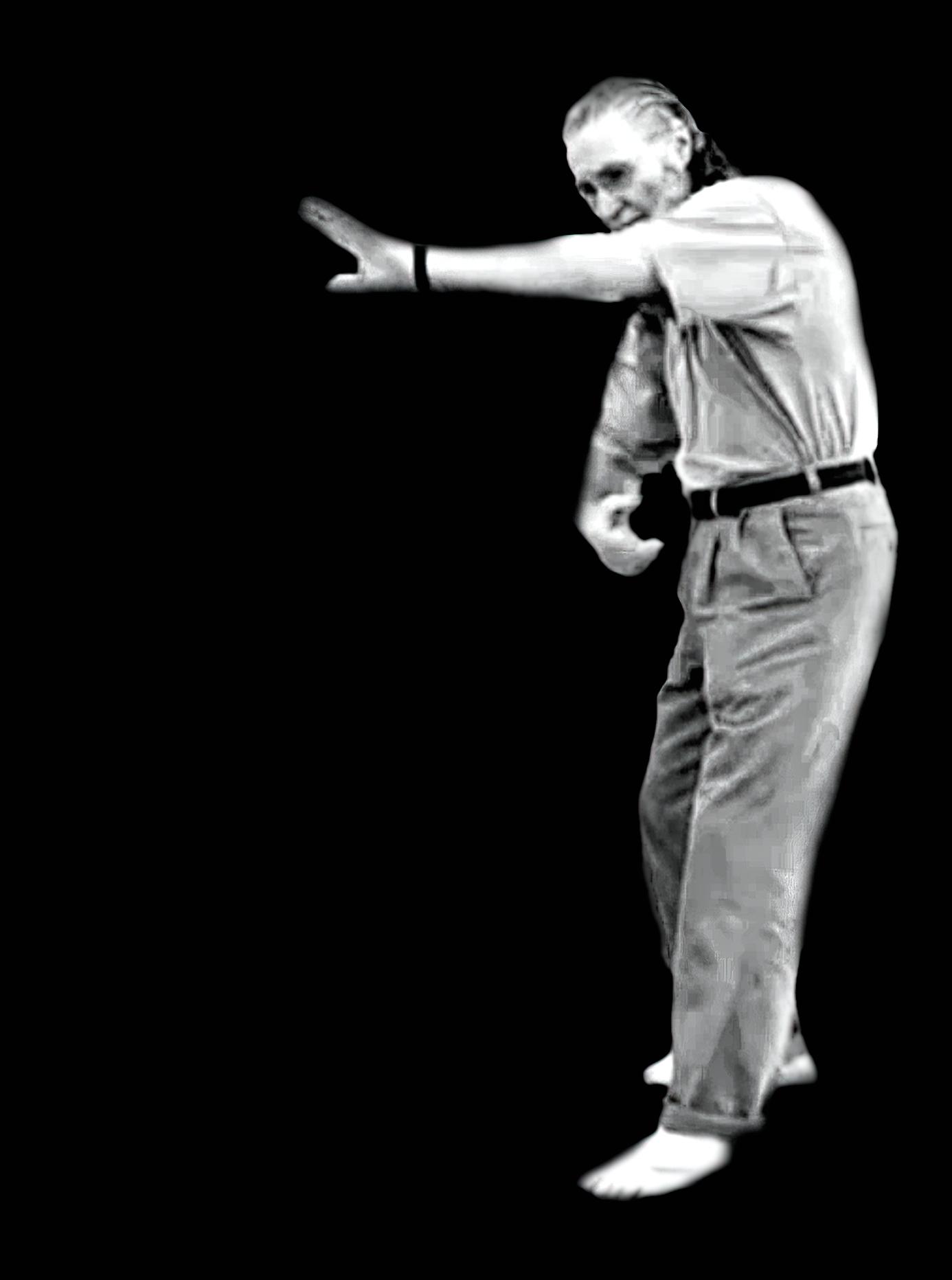
Wielding – Are you rotating like reeling silk? / Or are your hands moving straight and not attacking with rotations?
Smoothness – Are you reeling silk both inward and outward? / Or are your rotations not round?
It should be blatantly obvious to the reader that the skill of rolling, in all it guises, is vital in Yang style Taijiquan, specifically combative Taiji as it was transmitted through the line of Yang Shao-hou going back all the way to founder Yang Lu-ch’an, himself.
So, what do we mean by rolling and sealing?
According to Yang Ban-hou — the only other Yang other than Lu-ch’an himself, to have attained the title “Yang the Unmatchable" — in his book Explaining Taiji Principles6 [Taiji Fa Shuo; circa 1875], we are told:
Controlling his vessels, seizing his channels, capturing his sinews, and sealing his acupoints — these four skills are to be worked toward after you are able to measure down from the level of a foot to the level of an inch, then to a tenth of an inch, then to the width of a hair. When his vessels are controlled, his blood will not circulate. When his channels are seized, his energy will not move. When his sinews are captured, his body will have no control. When his acupoints are sealed, he will lose consciousness.
By controlling certain vessels, he will seem half dead. By seizing certain channels, he will seem fully dead. By capturing certain sinews, his power will be cut off. By sealing the lethal acupoints, he will not survive. Basically, if he is without energy, blood, or spirit, how will he have any control over his body? However, even if you have ability in the skills of control, seize, capture, and seal, these particular effects will not work without specific instruction in them.
To understand the theory of vessels, channels, sinews, and acupoints, it is necessary to be clear about which techniques will save or kill. To understand the techniques that will save or kill, it is necessary to be clear about the acupoints for life and death. In the acupoint art, how could you go without knowing them [seeing as not knowing them might result in killing someone by mistake]? To know how to activate the life and death acupoints, it is necessary to be clear about the technique of sealing. Sealing is what determines both life and death.
So, rolling and sealing are linked to how we strike the acupoints7 in the Yang system. Having said that it is critical to realise that rolling also plays a vital role in the skills of controlling, seizing, and capturing as well! However, in this article we will only be dealing with rolling in reference to the skill of sealing at a very basic level!
In Taijiquan we never strike straight8 into a point or any target as a matter of fact. We always strike at angle in order to negate any force on force. This is the internal way. When it comes to striking acupoints9 this concept becomes even more critical. It is not just that the point must be struck at an angle, it must also be struck in the correct direction10!
Many martial artists [not all] currently practicing acupoint strikes usually add this to their art, as opposed to the art having this built into its forms, training methods and dynamics from the start. The skill is inherent in Taijiquan11 and is taught [in abstract… just like animals learn instinctively] from the start.
The term “rolling” must be understood from two perspectives:
1. Rolling the acupoint 2. Rolling the attacking component [body, hand, leg, weapon etc] whilst striking the target in question.
The Chinese term diǎnxué, means to hit a pressure point, where diǎn equates to meaning point / dot / drop and xué refers to cave / cavity / hole / acupuncture point.
Acupoints sit in hollows12 or depressions, hence the usage of the term xué in their description. This is illustrated via the simple diagram below:
Acupoint
Diagram 1 cave/cavity/hollow
It is not in the remit of the present writing to go into a detailed analysis of how acupuncture points are situated at their locations! Suffice to remind the reader that the locations are not ‘fixed in stone’ per se — the point itself can shift slightly13 of its own accord, which is why experienced acupuncturists needle through ‘feel’ as opposed to sticking the needle exactly according to where the textbook tells them! This information is necessary to understand what we mean by rolling the acupoint!
Rolling the acupoint simply means displacing the point by striking at it from an angle, from either above, below or side and causing it to shift out of its natural position [‘house’]. This is shown in Diagram 2 for an angled linear strike from below shifting the acupoint slightly upwards:
However, as we have already noted above, acupoints are not permanently fixed in one spot [see Diagram 3] — so an angled linear strike may not necessarily work or even hit the mark, since in combat we would not have the time or luxury to workout where exactly the acupoints rests, as opposed to a TCM doctor working with a static patient on a bed!
This is where our skill of rolling the attacking component while striking the target comes into play!
Through reeling silk, having the ability to attack with rotations both inwards and outwards in any direction, rolling forward like thunder, we can, not only, overcome the problem of where an acupoint may be ‘sitting,’ but we can also generate devastating shearing forces in multiple directions across the entire surface of the target, and ensure our displacement happens [Diagram 4]!
Angled linear strike Diagram 2
Possible random positions of acupoint
Diagram 3
Rolling/Reeling Strike
Diagram 4
Trauma [swelling] occurs at the point of impact of the strike. It is this swelling which prevents the acupoint from returning back to its original position, thus ‘sealing’ or blocking the pathway of the nerve or meridian leading to pain, injury, knockout or death [Diagram 5]. Depending upon the target and the severity of the strike, the effect can be immediate or delayed.14
Below are a simple set of illustrations of a rolling strike with an example. Please DO NOT attempt such a strike as it is dangerous and shown for illustrative purposes only!
Trauma indicated by red causes ‘seal’ preventing the acupoint from returning to original position. Diagram 515


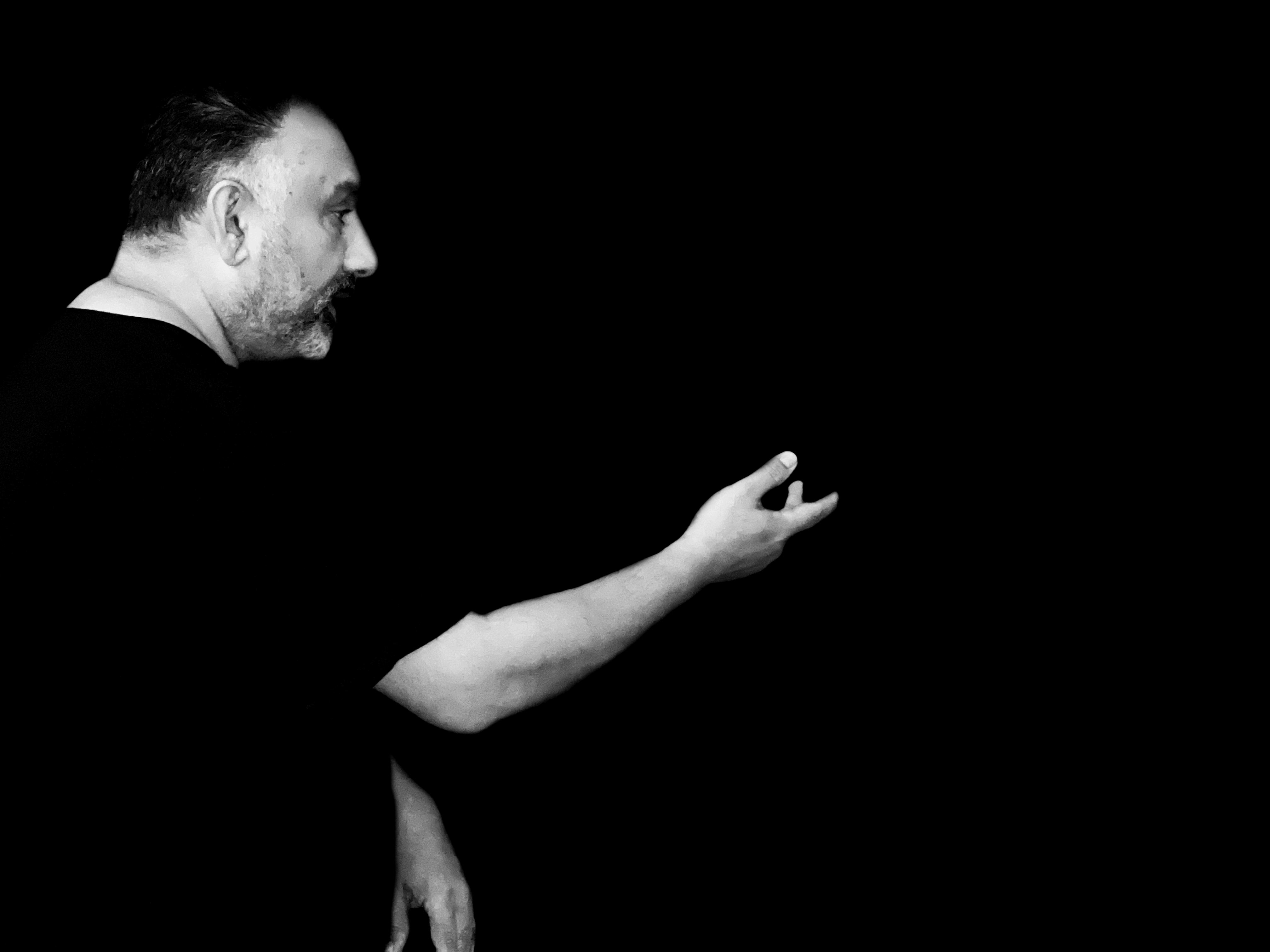


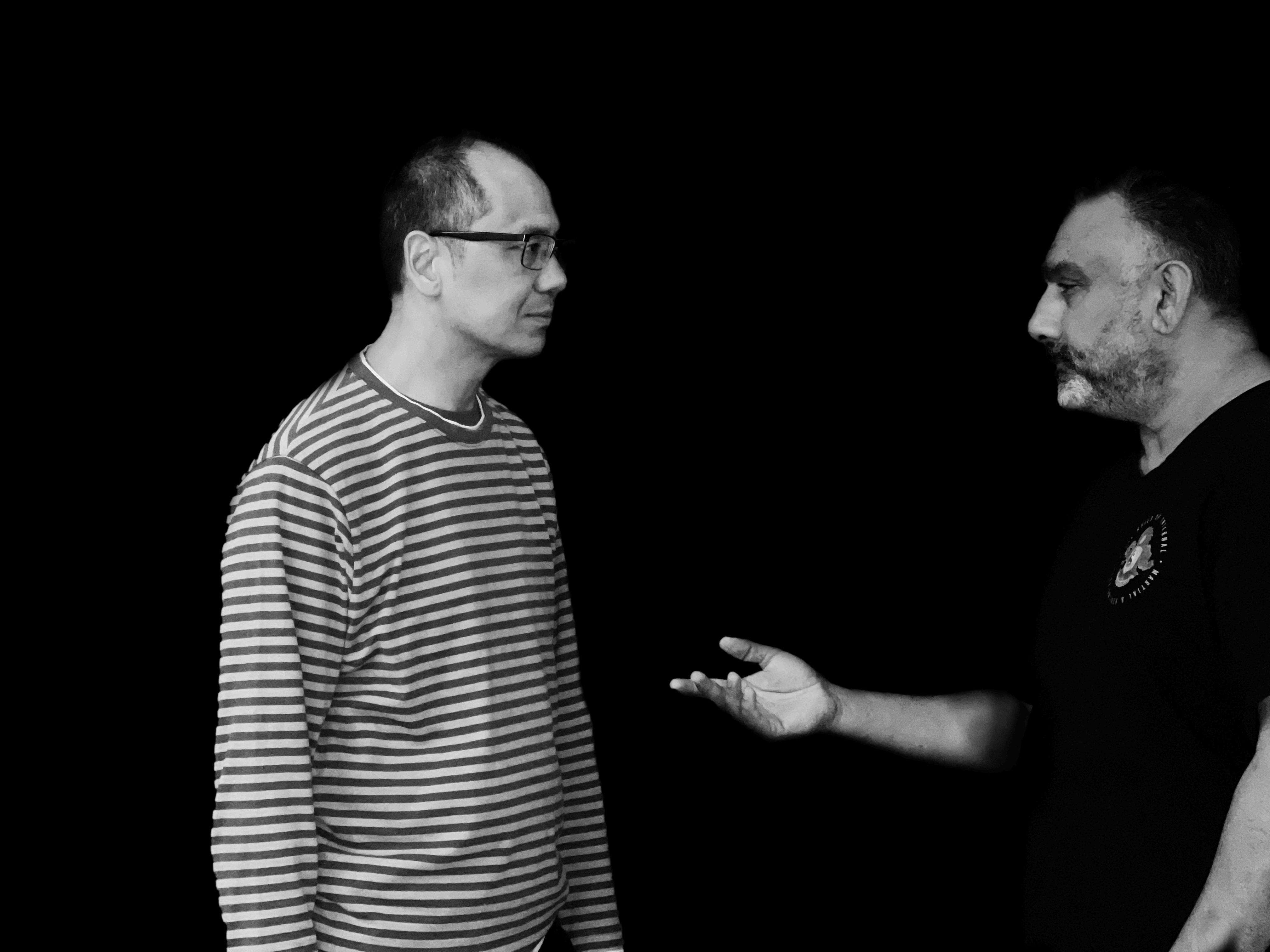


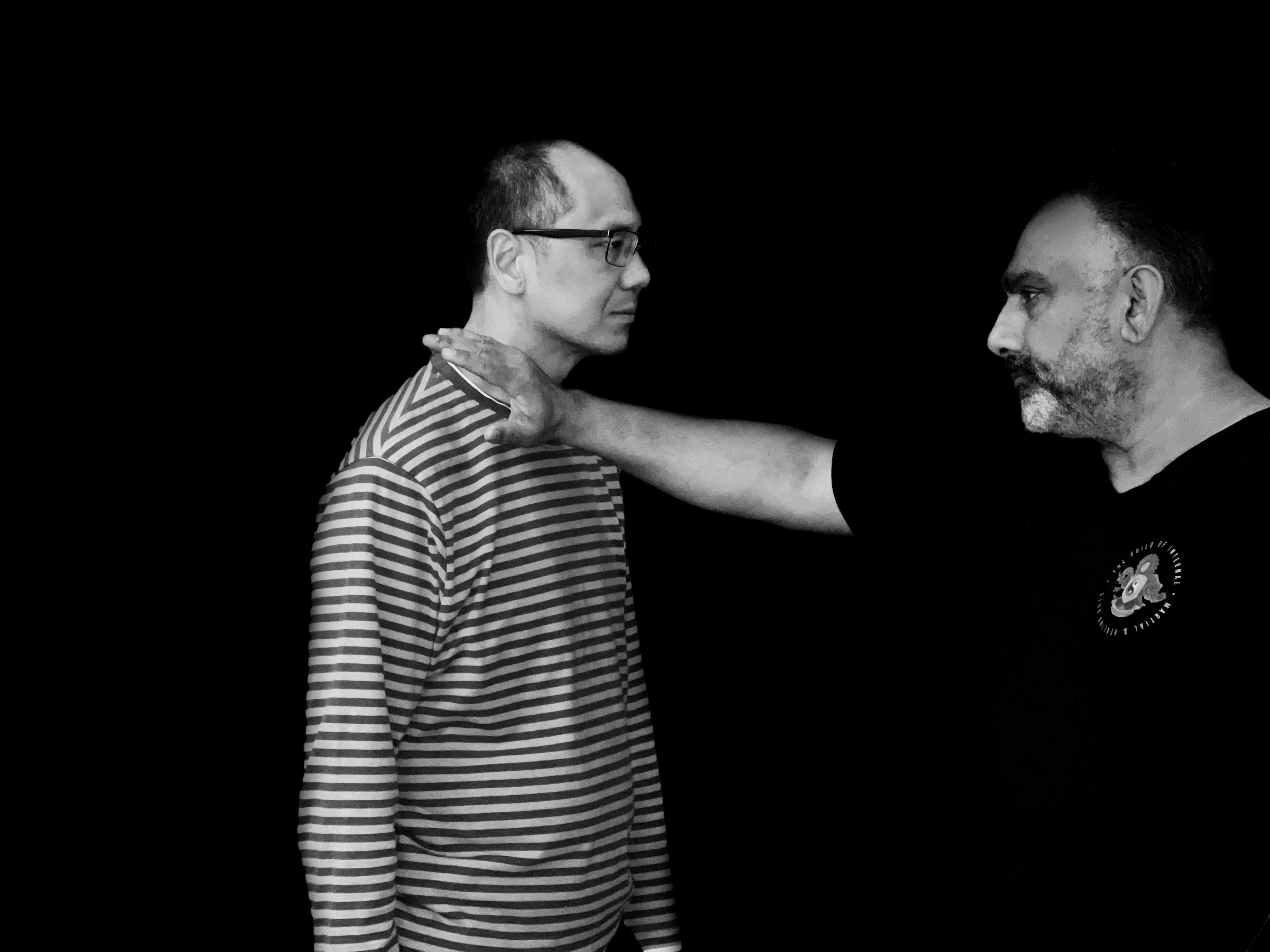
There are many, many training methods — apart from the Taiji form — [and tools] which teach us the skill of rolling and sealing from the Wudang Hand Weapons to the Stepping Methods, the 12 Deadly Katas, and Reeling Silk Methods to name just a few. The primary skill is obtained within Da Shao or ‘Striking Hands’.
The Small San Shao itself is a master teacher of rolling and sealing when it is taught correctly, and within them all Rolling Thunder — the second house of Yang, where we use the backs of our arms to strike much akin to a gorilla!
Of course, it should not require genius to work out that both heaven [upper] and earth [lower] must work in totally harmony and balance with the “six arteries” as per Gu Ruzhang:
‘The “six arteries” are the six unions: mind united with intent, intent united with energy, energy united with power, hand united with foot, elbow united with knee, and shoulder united with hip [the “arteries” being the imaginary conduits by which they unite].’
This is exactly what these training methods are designed to do! To give us the precise dynamics and natural innate body mechanics with which to roll and reel intuitively and reflexively!
My thanks to Kin for appearing in these photos with me.
Author’s Note:
Abridged version of chapter on Rolling & Sealing, taken from the forthcoming book, Unlocking The Small San-Shao, Copyright©Nasser Butt 2021
This is the first time that information about rolling and sealing has been publicly explained and advanced [albeit in a simplified manner] in the context of The House of Thunder, Reeling Silk, and various training methods and its connections to Dim-mak within the Erle Montaigue System and Old Yang Style Taiji!
Although Erle explained very extensively throughout his teachings, as well as alluded to ‘other’ stuff, he also stated very clearly:
“However, even I have held back on some areas such as 'Rolling Thunder' Form! This form is taught to students in the 2nd House.”
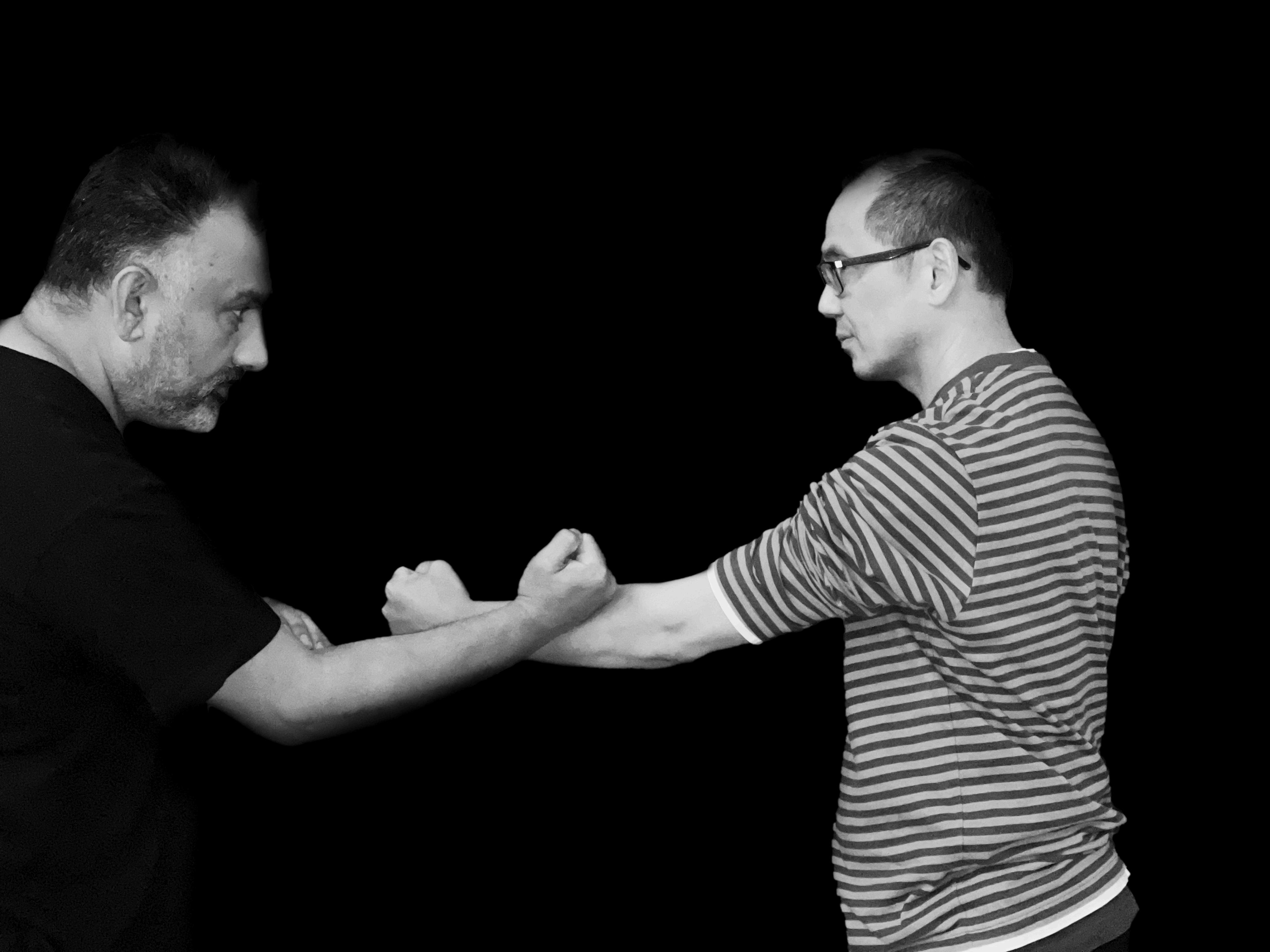

Above: A rolling and sealing strike from the Wudang Hammer Below: Rolling Thunder from the Wudang Stepping Methods
1. For details read the series of articles The Energies of Taijiquan by Nasser Butt, which appeared in Lift
Hands Volumes 13, 14, 15 & 16 respectively. 2. Ibid 3. Ibid 4. Butt, Nasser — The 12 Secret Rings of theYang Family, published April 2020. Also, see Lift Hands Volume 2
February 2017: The 12 Secret Rings of the Yang Family Part One: Form/Rolling Thunder
5. Ibid 6. Brennan Translation [https:// brennantranslation.wordpress.com] 7. Butt, Nasser — see article Dim Mak & Taijiquan; Peasant Talk; Lift Hands Magazine, Volume 17 March 2021 8. Even when we appear to be striking ‘straight’ in Taijiquan, there is still an element of a curve as per the
Classic — “Within curving, seek to be straightening”. 9. Montaigue, Erle/Simpson, Wally — The Encyclopedia of Dim-Mak: The Main Meridians; Paladin Press, 1997 10. I’ll mention Times here purely as a reference to direction and angle mentioned in the main text. It is accepted that each of the main meridians are more active at specific times of the day [see table below]. So, when an acupoint is struck during its ‘active time’ — the effect of the strike is more adverse. However, any acupoint when struck correctly will be damaging at any time! It would be an absurd concept to try to work out the time in the heat of the battle and striking along the specific active meridian… that would deservedly invite defeat! The rules are to attack the nearest target, regardless of what that target may be and is the reminder given to us by Wang T’sung-yeuh in his treatise Great Pole Boxing: The Theory… “Its root is to discard self and follow men: Many mistakenly discard the near and seek afar. This is known as being out by a hair’s breadth And going wrong by a thousand miles. Students cannot but carefully distinguish.” — In other words, he lays it out in a most simple manner in that the most basic of ideas is to forget your own plans [assumptions/preemptions] and simply respond to what your opponent is doing! Don’t second guess or get ahead of yourself! Often folk make the mistake of ignoring what is right there in front of them by focusing on something which has nothing to do with their immediate circumstances [in other words — they fail to
Meridian Time Active Yin/Yang Organ Gallbladder 11pm — 1am Yang
Liver 1am — 3am Yin
Lung
3am — 5am Colon [Large Intestine] 5am — 7am Stomach 7am — 9am
Spleen 9am — 11am
Heart
11am —1pm Small Intestine 1pm — 3pm
Bladder 3pm — 5pm
Kidney Pericardium
5pm — 7pm 7pm — 9pm Triple Heater 9pm — 11pm Yin Yang Yang Yin Yin Yang Yang Yin Yin Yang
live and act in the present], thereby missing by an inch and loosing by a mile! 11. See note 7 above! 12. This sometimes gives rise to the term ‘Hunting in Shadows’ — in reference to the mouth of a cave sitting in a shadow as well as attacking using peripheral vision, where the peripheral vision can see the shadows caused by depressions more effectively then sharp focus in combat!
13. Again, it is not in the remit of this article to fully explain the science or theory behind this — it would take far too much specialist detail! That an acupoint’s position can vary slightly from day to day for a variety of reasons is an accepted fact in acupuncture theory and practice. 14. By using the term ‘delayed,’ I do not mean any magical or mystical death strike as per the movies! It simply means that a blow, for example to the head or temple, can cause a slow swelling or internal bleed which may take some time to take effect, especially if medical attention has not been sought immediately or is unavailable! An example would be a strike to the side of the skull just above the tip of the pinna [ear] — if struck correctly, this may cause an immediate knockout and internally burst the blood-vessels, which may bleed slowly and the resultant swelling lead to death later. 15. Diagrams 1—5. Copyright©Nasser Butt, drawn from personal training notes with Erle Montaigue on
Rolling, House of Thunder, Wudang Hand Weapons and Stepping Methods.










